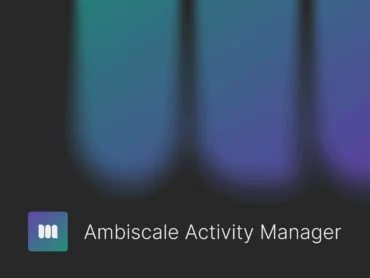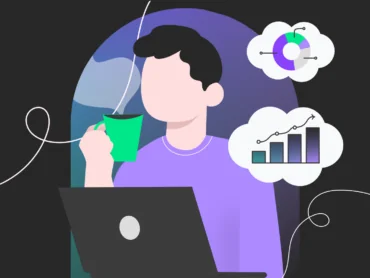Platform migration as a long-term investment strategy
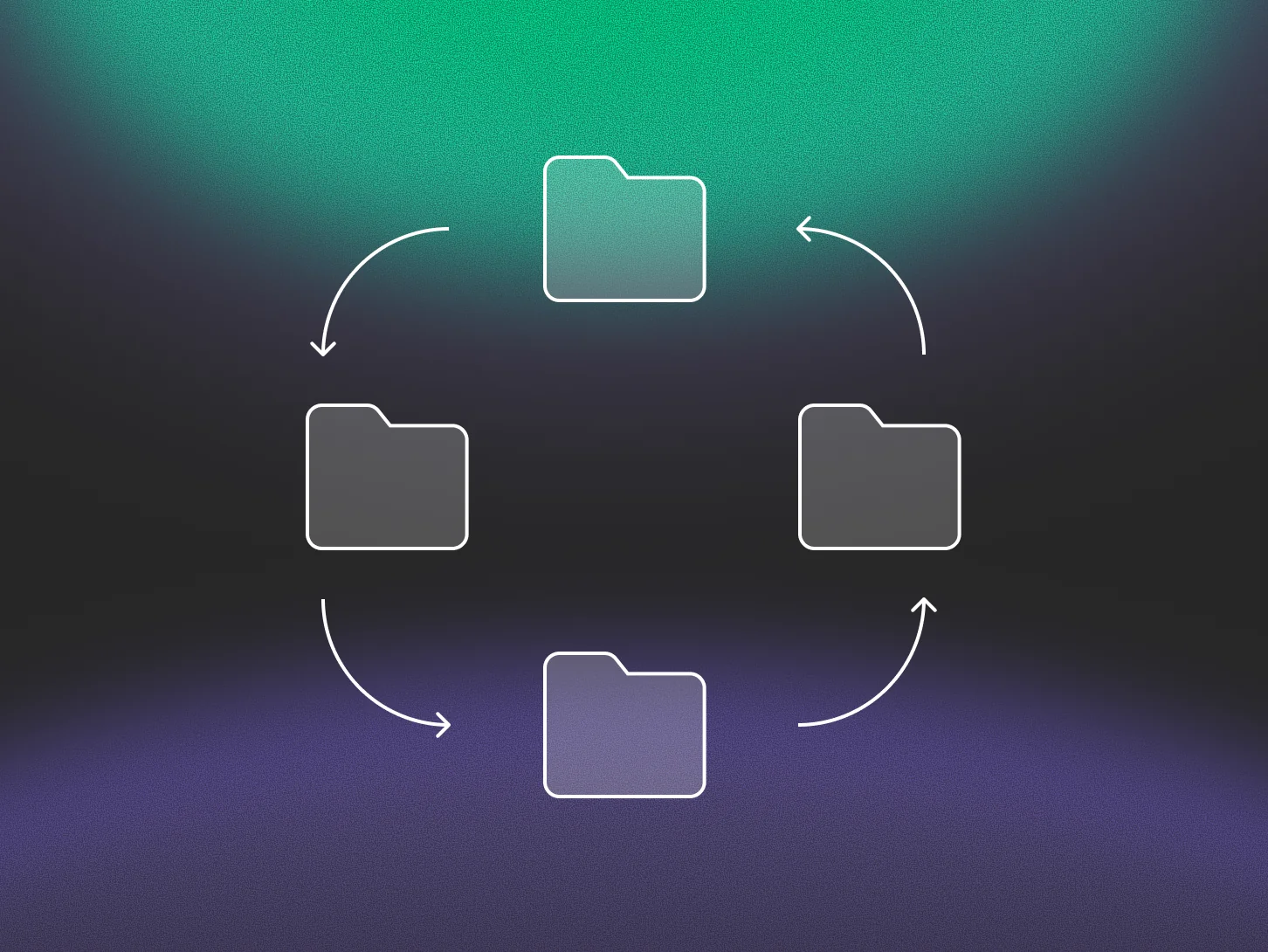
Every business owner has been there: staring at an invoice for a “simple” website update that somehow costs more than your first car. Or watching your development team spend three months implementing what should have been a straightforward feature. What’s behind this? You might be running your digital business on a platform that’s grown beyond your actual needs and your budget.
While migration might seem like an expensive headache, the math tells a different story. Research indicates that 92% of companies are satisfied with their platform migration results, with many experiencing significant cost reductions and performance improvements. But what makes migration a smart long-term investment, and when does it make financial sense to simplify?
The hidden costs of complexity
The most expensive platform isn’t always the one with the highest license fees. When evaluating the total cost of ownership (TCO), three factors consistently drive long-term expenses through the roof: technical debt, developer availability, and operational overhead.
Technical debt: the silent budget killer
McKinsey research reveals that 30% of CIO budgets for new products get redirected to fixing problems caused by technical debt. Technical debt means platforms that get harder to change as you grow.
Take a closer look at Magento’s architecture. While powerful, it operates on an exponential complexity curve. Each new feature potentially creates dependencies that affect other parts of the system. WooCommerce and simpler platforms follow a more linear growth pattern, where adding functionality doesn’t necessarily compound existing complexity.
The math is stark: Shopify offers up to 36% better TCO compared to more complex alternatives, while WooCommerce generates 32-41% higher operational costs than streamlined solutions, but still significantly less than enterprise-level platforms.
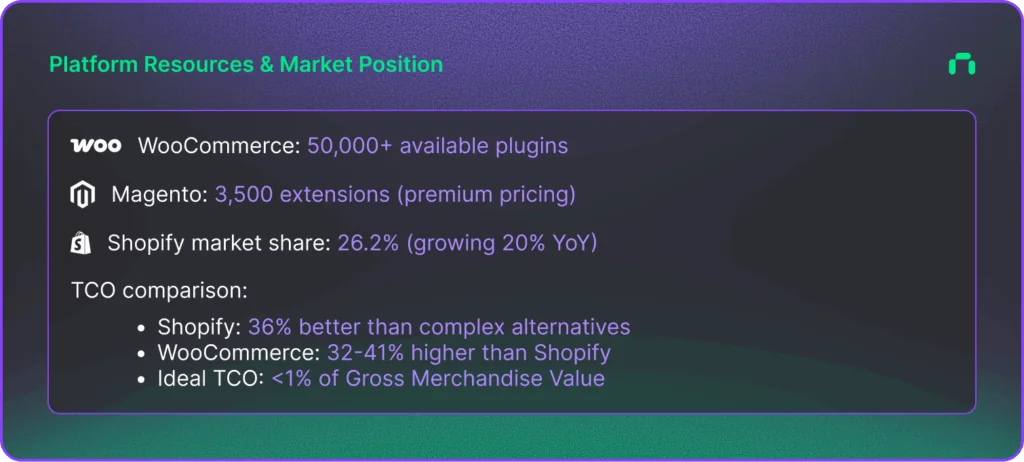
The developer shortage tax
Here’s where complexity really hurts your wallet. Magento developers command $90,000-$135,000 annually in the US, while WordPress/WooCommerce specialists range from $65,000-$130,000. However, salary represents just the beginning. Finding qualified Magento developers takes longer, and they face less availability for urgent fixes.
The real cost comes from opportunity delays. When your complex platform needs attention, and your specialized developer is booked for months, every day of delay costs revenue.
Performance: the conversion multiplier
Speed sells. Google’s research shows that improving page load time by just 0.1 seconds increases conversions by 8.4% and raises the average order value by 9.2%. However, platform choice significantly impacts your ability to achieve these speeds.
The Core Web Vitals data paints a clear picture:
- 93% of Shopify sites meet “fast” website criteria
- 53% of Magento sites achieve fast speeds
Additionally, 71% of users leave a website if they find it hard to use. These numbers translate directly to revenue.
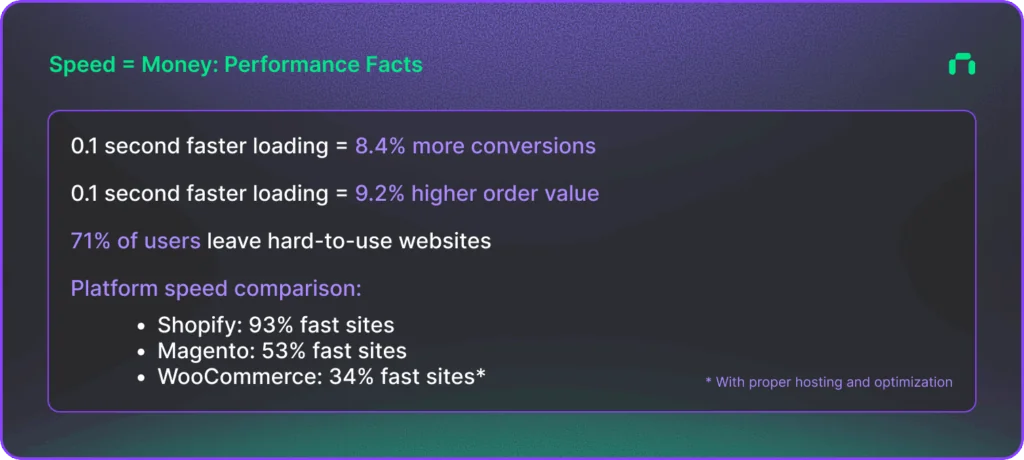
The migration success stories
Let’s address the elephant in the room: migration anxiety. Business owners worry about downtime, data loss, and disrupted operations. But real-world results suggest these fears are largely unfounded.
The transformation stories from across industries illustrate the potential upside. Companies that seemed trapped by their complex platforms often discover that migration unlocks capabilities they didn’t know they were missing. Simple changes that once required months of development can suddenly be implemented in days.
Experienced companies like ambiscale have developed proven processes to ensure safe migrations with minimal risk. After completing hundreds of migrations over the years, our team understands potential pitfalls and has established workflows that virtually eliminate the chance of data loss or extended downtime. This accumulated expertise transforms what seems like a risky move into a predictable, manageable process. Our migration services combine technical precision with business continuity planning.
Myths vs reality: common migration misconceptions
Myth: “We’ll lose SEO rankings during migration.”
Reality: Properly executed migrations preserve and often improve SEO performance.
SEO migration is critical to maintaining organic traffic and rankings during platform transitions.
Explains Joanna Jelenik, Technical SEO Manager at Insightland.
With proper keyword mapping, redirect strategies, and technical SEO optimization, businesses typically see improved search performance within 3-6 months post-migration. The key is treating SEO as an integral part of the migration process, not an afterthought.
Building a website with solid SEO, following best practices, and leveraging AI where appropriate, is crucial to avoid costly CMS adjustments and unlock the site’s full potential by resolving technical issues.
Myth: “Migration means months of downtime”
Reality: Modern migration tools enable seamless transitions with minimal business disruption. Contemporary migration processes maintain normal store operations throughout the transition, with new platforms going live within days rather than months.
Myth: “We’ll lose our customizations”
Reality: Simpler platforms often provide more customization flexibility, not less. WooCommerce offers over 50,000 plugins and extensions, while maintaining easier customization than enterprise platforms. Professional development teams can recreate any functionality since WooCommerce operates as an open ecosystem.
When simplification makes financial sense
Not every business needs to migrate, but several indicators suggest you’re overpaying for complexity:
Your development costs are growing exponentially. If simple changes increasingly require significant developer time and budget, your platform may be working against your growth rather than enabling it.
Your team struggles with day-to-day operations. When content updates, product additions, or promotional campaigns require technical intervention, operational efficiency suffers.
Performance optimization feels like pushing a boulder uphill. If achieving acceptable page speeds requires constant technical intervention, your platform architecture may be fundamentally misaligned with performance requirements.
You’re not leveraging enterprise features. Many businesses migrated to complex platforms expecting to use advanced features that never materialized. If you’re paying for capabilities you don’t need, simpler solutions offer better value.
The ecosystem advantage
Platform choice affects more than just your immediate development costs – it determines your entire business ecosystem. WooCommerce’s 50,000+ available plugins create a competitive marketplace that drives down costs and increases options. Magento’s 3,500 extensions, while higher quality on average, come with premium pricing and often require more technical integration work.
Market share matters too. Shopify’s 26.2% market share (growing 20% year-over-year) means more developers, more resources, and more long-term platform stability. When you choose a platform with strong market momentum, you’re betting on continued innovation and support.
Making the migration decision
Current research indicates 77% of businesses feel urgent migration pressure within the next year, suggesting widespread recognition that current platforms aren’t meeting business needs.
The financial case for migration typically centers on three factors:
- Operational efficiency: Can simpler tools reduce your day-to-day operational costs?
- Development velocity: Will the platform change accelerate your ability to implement new features and respond to market changes?
- Performance ROI: Can improved platform performance directly increase conversion rates and revenue?
If you’re answering yes to these questions, migration likely represents a strategic investment rather than just a technical project.
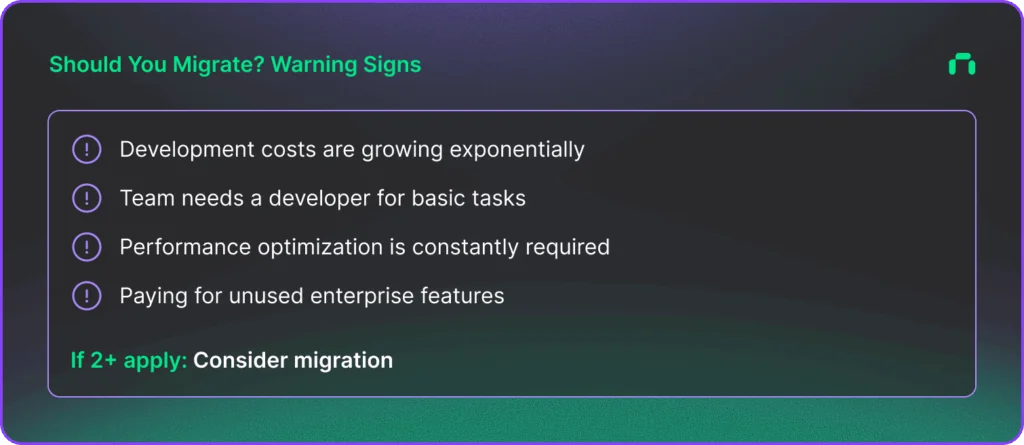
Planning your migration strategy
Successful migrations require strategic planning that considers business continuity, team training, and long-term goals.
The most effective approaches treat migration as a business transformation rather than a technical project. This means involving stakeholders across marketing, operations, and sales to ensure the new platform serves broader business objectives.
Professional migration services can significantly reduce risk and accelerate implementation. At Ambiscale, our e-commerce migration expertise combines technical precision with business strategy, ensuring migrations deliver both immediate functionality and long-term cost efficiency. Working with partners like Insightland for SEO migration ensures that technical transitions support rather than compromise your digital marketing investments.
The bottom line
Platform migration is all about optimizing your total cost of ownership while positioning your business for sustainable growth. With ideal TCO representing less than 1% of Gross Merchandise Value, the right platform choice can transform technology from a cost center into a growth driver.
The businesses seeing the most dramatic results aren’t necessarily moving to the most advanced platforms; they’re moving to the platforms that best match their actual needs. Sometimes the smartest technical decision is also the simplest one.
Before your next development invoice arrives, consider whether you’re paying for complexity you don’t need. The math on migration might be more compelling than you think.
